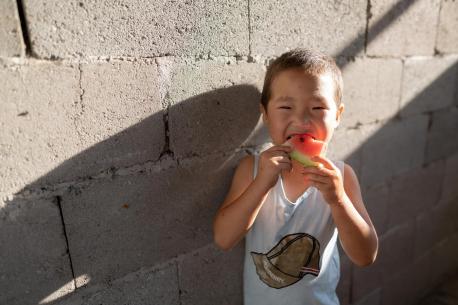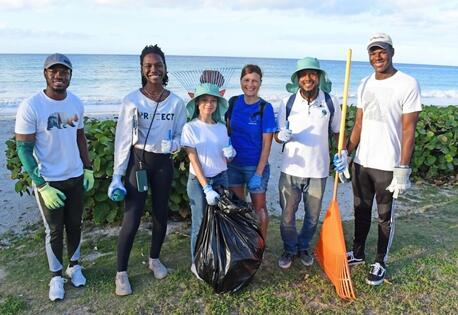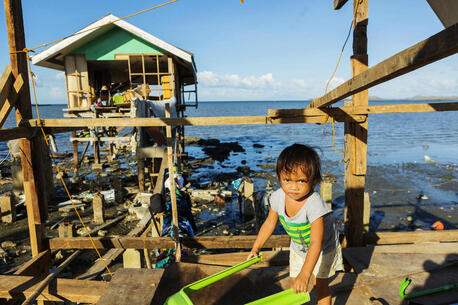
UNICEF: How to Keep Kids Safe and Healthy During a Heat Wave
Beat the heat: a primer for parents on how to protect kids as periods of extreme heat happen more and more often as a result of climate change.
What is a heat wave?
A heat wave is a period of unusually hot weather, when temperatures reach somewhere in the top 10 percent of local 15-day average temperatures for three or more straight days.
How dangerous is a heat wave for children?
Children are uniquely vulnerable when exposed to heat waves. They take longer to acclimate to higher temperatures; their bodies are slower to produce more sweat as needed to cool down. Their core temperatures rise higher and faster than adults, so the adults may be slow to realize what's happening.
Young children are also more susceptible to becoming dehydrated because more of their body weight is water.
Exposure to extreme heat raises a child's risks of developing asthma, allergies, cardiovascular illness and respiratory problems later. Heat waves can limit access to safe water, and affect a child's ability to concentrate and learn, undermining their progress at school.
Pregnant women risk experiencing labor complications during heat waves, and delivering low birthweight babies.
How does a heat-related illness happen?
Exposure to high temperatures and humidity combined with physical exertion can overwhelm the body’s ability to cool itself.
Mild cases of heat-related illness include an infant's heat rash.
A more serious — in some cases life-threatening — form of heat-related illness is heatstroke: when a person's body temperature surges above 104 degrees Fahrenheit (40 degrees Celsius). With heatstroke, there is a risk of organ failure.
How can parents keep young children safe and healthy during a heat wave?
To beat the heat, UNICEF advises parents to:
- be aware when hot weather is coming — check the forecast and adapt plans accordingly
- make sure kids drink plenty of water — doctors advise caregivers to closely monitor water consumption and to encourage children to drink before they ask for it, because if they are asking for water, they are likely already dehydrated
- create cooler places for infants and children to play, and avoid the outdoors during the hottest part of the day (midday/afternoon hours)
- find ways to limit physical activity or over-exertion — maybe skip the playground!
How can I tell that my child is suffering from heat stress?
Symptoms of heat stress include feeling thirsty, sweating, headaches and dizziness. Odd behavior can also be a sign.
If symptoms are detected, immediately move the child to a shaded and ventilated area to rest and rehydrate. If symptoms are severe, a child may need attention and care from a medical professional.
Why are we hearing so much more about heat waves these days?
Heat waves have grown more intense and more frequent because of climate change, according to scientists.
Globally, 1 in 4 children are exposed to frequent heat waves. In Europe and Central Asia, the rate is double that, or 1 in 2.
As heat waves happen more and more, children's levels of exposure — and the health and safety risks involved — are only expected to increase.
What can governments do to reduce risks from heat waves?
UNICEF argues that policy responses and financing for solutions to heat waves remain inadequate and is urging action by governments and others to minimize, manage and build resilience to chronic heat exposure — keeping the needs and rights of children at the heart of all adaptation and mitigation efforts.
UNICEF's recommendations include:
- investing in early warning systems
- reforming building standards
- adapting water, sanitation and hygiene, health, education, nutrition, and other critical systems, services and infrastructure to better cope with the impacts
- training health workers and teachers to strengthen prevention, early action, diagnosis, and treatment of heat-related illness in children
- ensuring adequate financing for necessary interventions
- support climate education and training, including green skilling
What is UNICEF doing to mitigate the harmful effects of heat waves?
UNICEF works with governments and partners worldwide to develop and implement climate action plans — like establishing better heat alert systems. UNICEF also supports a range of efforts to adapt and/or mitigate climate impacts like heat waves on education, health and other critical systems that children rely on to survive and thrive.
UNICEF also advocates for accelerated action by governments to reduce carbon dioxide emissions to limit global warming to 1.5 degrees Celsius, while also increasing funding for climate change adaptation measures.
Learn more about UNICEF's response to the global climate crisis.




